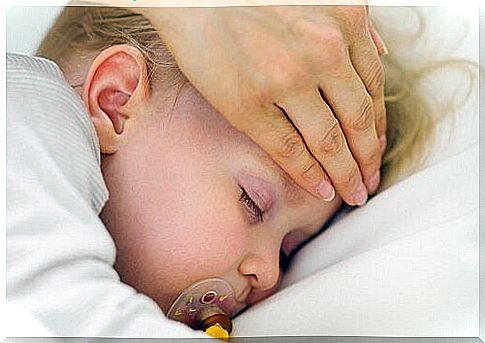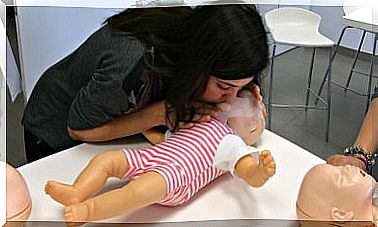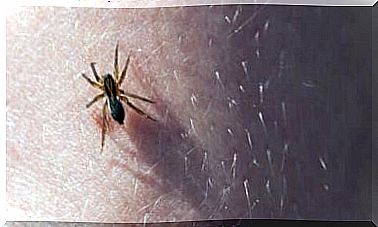Tips To Lower Your Child’s Fever

In this article we give tips for lowering your child’s fever. Children often have a fever. That’s because their bodies have to fight off masses of pathogens to make antibodies that adults already have.
Fever manifests as an increase in body temperature that mimics the natural response to certain illnesses or infections.
We use the thermometer to see if someone has a fever. If the temperature is around 37.5 degrees Celsius, the temperature is slightly higher than normal. In that case, it is important to try to bring your child’s fever down as quickly as possible.
Of course, you should see a doctor if your child has any of the following symptoms in addition to a fever:
- Cough or phlegm
- Vomiting or diarrhea, or the opposite, not or little urination or defecation
- Pale skin
- Apathy
- Skin rash
- Lack of appetite
How do you treat a child with a fever?
Below you will find a number of ways to lower your child’s fever as quickly as possible.
Give him a lukewarm bath
To lower his body temperature, you can put him in a lukewarm bath. Fill the bath with water that is 36.5 degrees Celsius. In this way you put the child in water that has the same temperature as his normal body temperature.

It is best to keep him in the bath until the water gradually cools down. In this way he will also cool down and relax himself.
Put a cool cloth on his forehead, neck, legs and hands
It is recommended to use a wet cloth with room temperature water. Cover the forehead, hands, legs and neck with the wet cloth.
This is a way to cool the child down without bathing him. It is a very good alternative in case he is too tired and does not want to move. This is also a very good option during the winter.
When the cloths get warm, it is good to moisten them again and reapply. You can repeat this a number of times. Then check with a thermometer whether your child’s fever has dropped.
Ensure a good room temperature
It is important to regulate the temperature in your child’s room so that it is not too cold or too hot. In addition, it is important to ventilate the room to ensure fresh air.
If it is summer and you are using air conditioner or a fan, make sure your child is not sitting directly in front of the ventilation device. It is better that he sits at a distance so that he only feels a gentle breeze.
take off some clothes
You should lower the child’s body temperature to prevent the fever from increasing. When it’s winter, it’s best to take off a layer of clothes. When it’s summer, it’s best to keep your child as cool as possible.
Another option is to take the shoes off so that he has bare feet.
If it is very hot, try putting his feet in contact with a cold surface. That could be a floor, a wet cloth or a bowl of water. It depends a bit on the age of the child and what is most comfortable for him.
Avoid dehydration
If a child has a fever, he will probably sweat and lose his appetite. It is then important that you try to keep him as hydrated as possible.
For that reason, it is always recommended that children drink plenty of fluids to lower the fever. Good choices include water, juice, or warm soup in the winter.

Rest and some rest
But in the end, the best cure for a child’s fever is rest and rest. Children are often tired and do not feel like playing when they have a fever.
But of course there are also children who are not aware of their body temperature when they have a fever. And they play and run just like they always do.
It is recommended to keep them calm and to do activities that do not require too much effort. For example, you can think of watching a movie or reading a book.
And remember…
Fever is a disease and as such , a doctor must make a diagnosis in case medications need to be administered.
Never experiment with medicines yourself when your child has a fever, but always consult a doctor. Making decisions on your own can put your child’s health at risk.
If you have tried all of the above tips but you still see that your child’s fever has not gone down, or has even risen, see your doctor or pediatrician immediately for advice.
You should also seek medical attention if a fever persists for more than two consecutive days.









